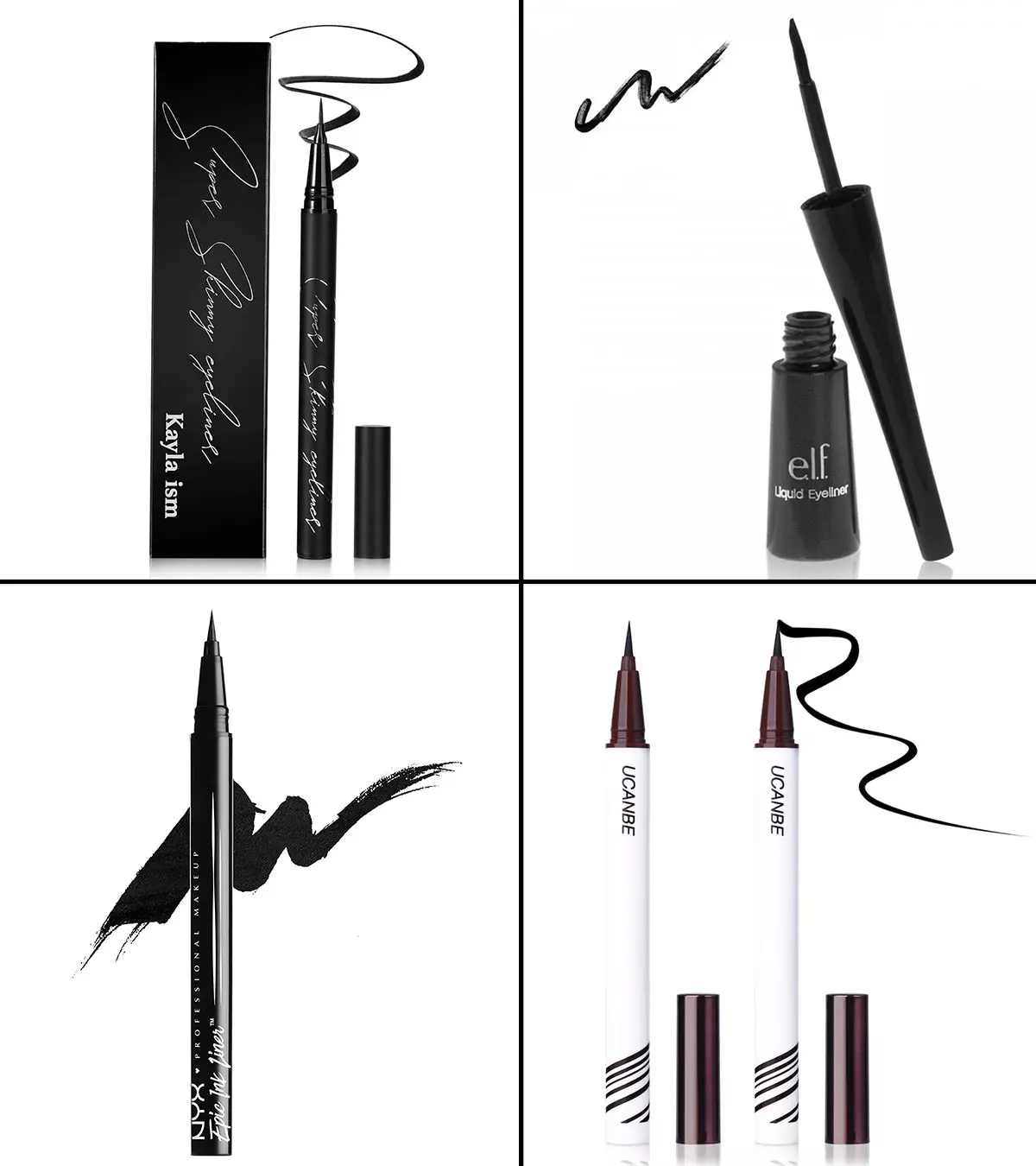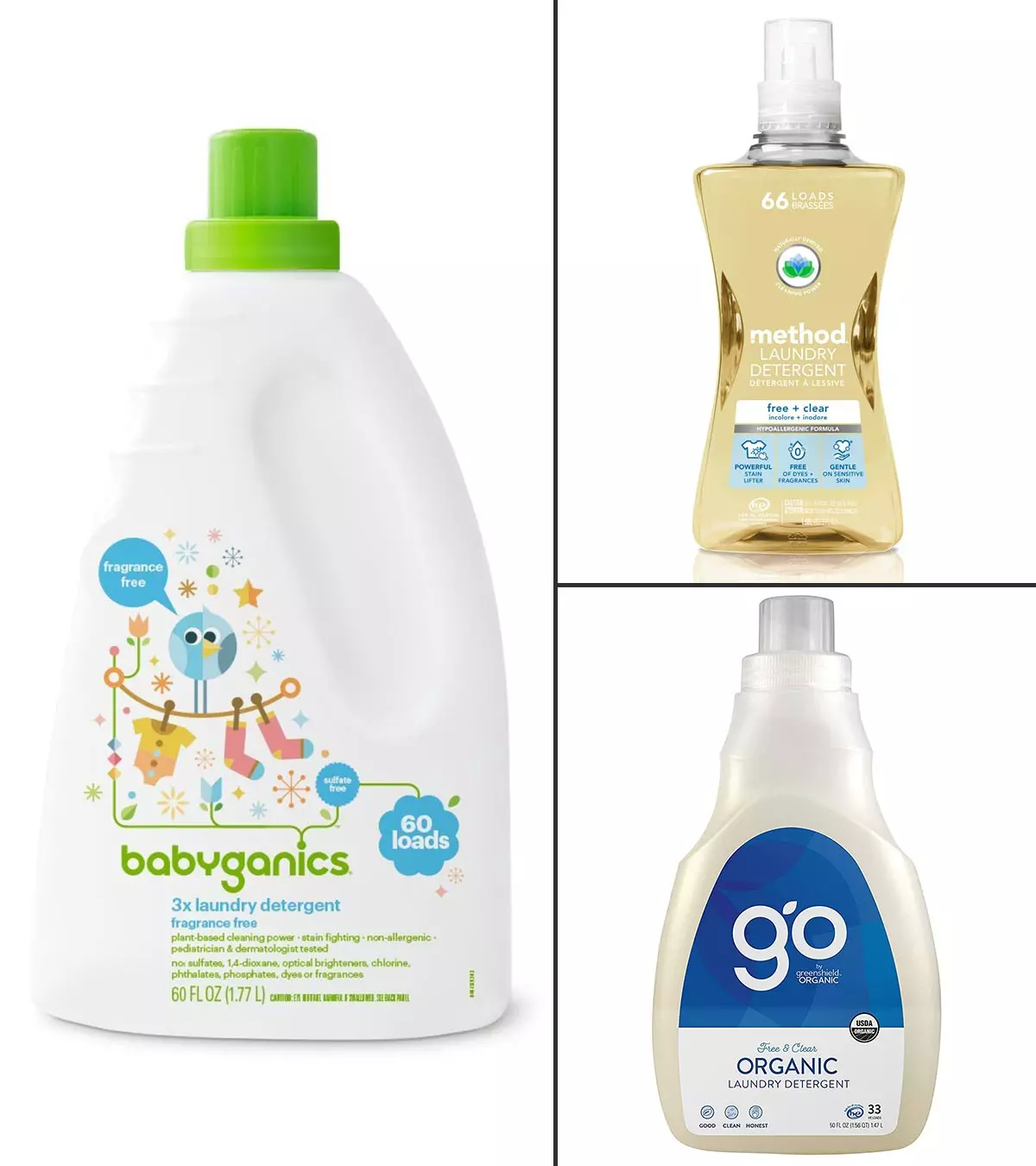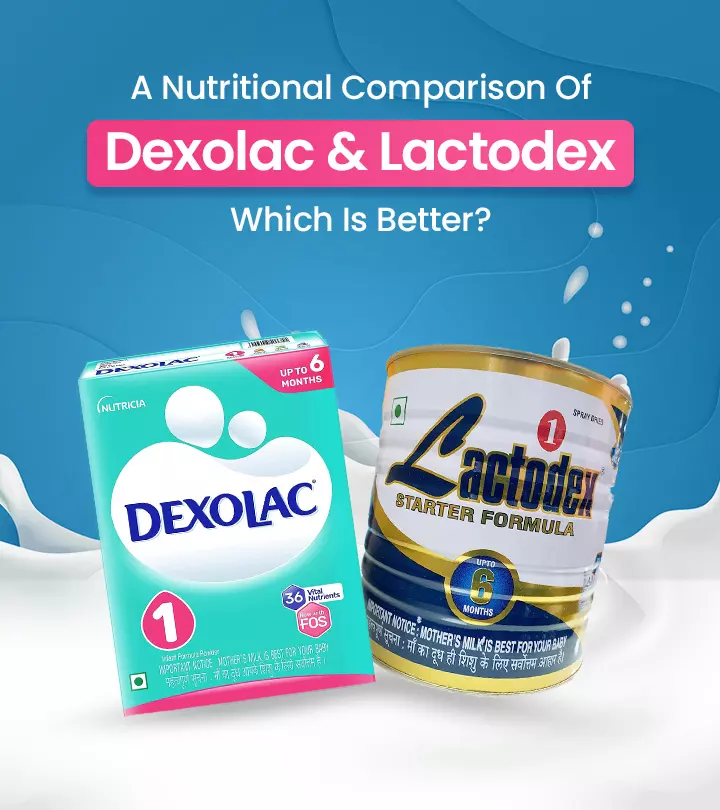
Dexolac Vs. Lactodex: A Nutritional Comparison Of The Two Stage 1 Formulas
Breast milk is a complete source of nutrients for your infants, as it is packed with carbohydrates, fats, proteins, vitamins, minerals, digestive enzymes, and immune cells (1). However, for some moms, breastfeeding may not always be possible due to valid reasons. So, in such cases, infant formula can help your little one get essential nutrients for their overall growth and development. The right formula milk that closely mimics breast milk and contains carbohydrates, protein, fat, vitamins, and minerals may be a good alternative when the mother is unable to breastfeed for a short duration due to certain emergencies such as an illness, medication usage, or epidural anesthesia (1).
Read on as we compare the Dexolac and Lactodex stage 1 baby formulas to help you learn about their nutritional composition and choose one that best suits your baby’s needs.
Dexolac Vs. Lactodex: How Are They Different?
Dexolac Infant Formula and Lactodex Starter Formula have whey and casein proteins, vitamins, minerals, iron, folic acid, calcium, and other nutrients in common but with minor differences in composition. However, compared to Lactodex, Dexolac contains FOS (Fructo Oligosaccharides), a prebiotic fiber known for enhancing mineral absorption, softening stools, and supporting digestion. Further, Lactodex contains maltodextrin, while Dexolac contains 100% lactose.
All About Dexolac Stage 1 Infant Formula
The Dexolac Stage 1 infant formula is scientifically formulated with 36 essential nutrients to promote the overall growth and development of your little munchkin. FOS in this formula powder helps reduce the occurrence of hard or watery stools, softens stools, and enhances mineral absorption. Further, the milk fat with beta palmitate improves energy intake and calcium absorption. The stage 1 formula powder is also iron-fortified and provides 490kcal of energy per 100g.

Key Ingredients
Partially skimmed milk, lactose, edible vegetable oils (corn oil and canola oil), folic acid, demineralized whey and whey solids, FOS, minerals, vitamins, taurine, acidity regulator (sodium hydroxide), antioxidants(mixed tocopherols)

Price
₹430 (400g)
How Often Should I Use It?
If your little one is on formula milk, you may feed them the Dexolac stage 1 infant formula. Refer to the feeding table on the packaging or consult your child’s pediatrician for the recommended daily intake. You should also follow the step-by-step instructions given on the packaging to prepare the feed.

Pros
- Contains FOS, which helps in better digestion and mineral absorption
- Contains easy-to-digest whey proteins
- Strengthens bones
- Contains iron, which might help prevent anemia
- Suitable for vegetarians
- Includes a measuring scoop
Cons
- Does not come in resealable packaging

All About Dexolac Stage 1 Infant Formula
Buy On AmazonAll About Lactodex Starter Formula
The Lactodex Starter Formula is enriched with vitamins, minerals, fats, carbohydrates, proteins, and other essential nutrients that promote your baby’s growth and development and boost the immune system. It offers 495kcal of energy per 100g to boost your baby’s energy level and is fortified with iron to prevent anemia. Moreover, the instant milk-protein-based formula contains easy-to-digest whey protein.
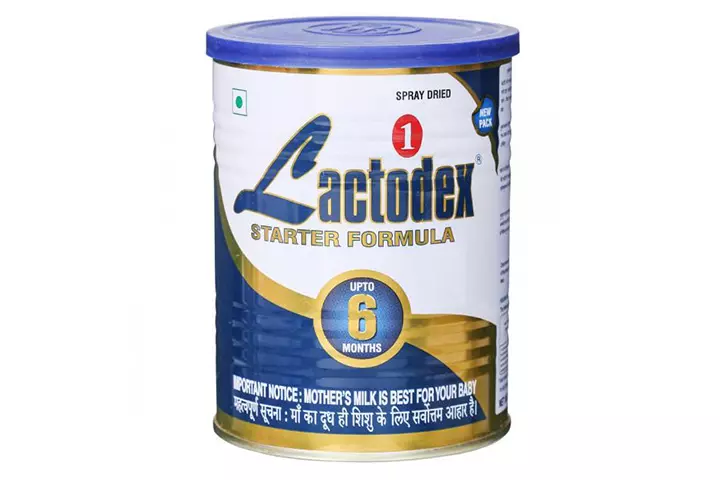
Key Ingredients
Milk solids, lactose, maltodextrin, edible oils (coconut, groundnut, and soybean), whey protein concentrate, milk fat, sucrose, minerals, emulsifier (322), vitamins, taurine, inositol, antioxidant (304) and L-Carnitine.
Price
₹ 965 (1,000g)
How Often Should I Use It?
You may feed the Lactodex Starter Formula to formula-fed infants daily for up to six months. Refer to the feeding table on the packaging or consult your child’s pediatrician for the recommended daily intake. You should also follow the instructions given on the packaging to prepare the feed.
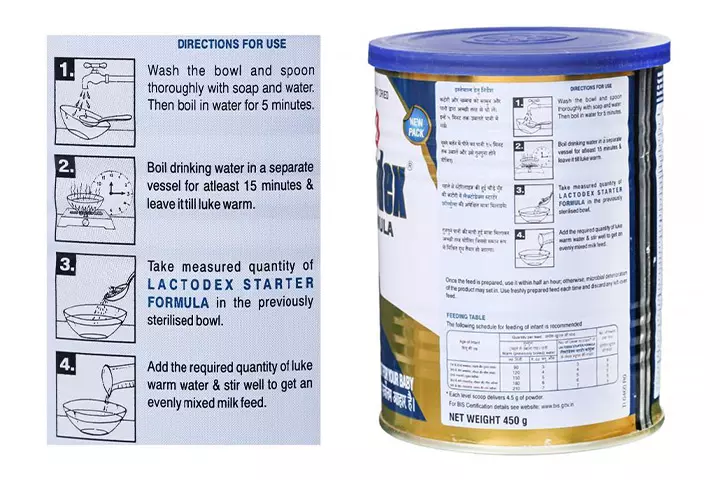
Pros
- Strengthens the immune system
- Boosts energy levels
- Easily digestible
- Ensures lump-free preparation
Cons
- Contains sucrose, which is not recommended by WHO

All About Lactodex Starter Formula
Buy On AmazonDexolac Vs. Lactodex — Final Thoughts

The Dexolac and Lactodex formula milk powders are formulated to provide essential nutrients that support the overall growth and development of your baby. However, they differ in their formulations and nutritional values. For instance, Dexolac is enriched with FOS, making it more easily digestible than Lactodex, while Lactodex may offer a little more kilocalories per 100g than Dexolac. In the absence of breast milk, these formulas may be considered. Ensure you choose the right formula for your little one after consulting a pediatrician.
Winner
Dexolac and Lactodex formula milk contain essential nutrients, including iron, minerals, and vitamins, which can contribute to your baby’s growth and boost immunity. The stage 1 baby formulas also contain whey protein, which is easily digestible. If you are looking for a formula to soften your baby’s stools, Dexolac might be a good choice as it contains FOS. Before starting on any of these formulas, ensure you consult a healthcare professional to learn which of these would be best for your infant based on their specific needs and requirements.
Frequently Asked Questions
1. How do Dexolac powder and Lactodex powder differ from each other?
Both the formula powders have a similar composition. However, Lactodex contains sucrose, which is not recommended by WHO. Further, Dexolac, unlike Lactodex, contains Fructo Oligosaccharides (FOS), which aid digestion and soften stools.
2. What should I consider when choosing between Dexolac and Lactodex?
Dexolac and Lactodex milk powders contain similar nutrients for your baby’s overall growth and development. However, you may consider the taste acceptance, ease of preparation, blendability of the formulas, etc. when making a choice. We recommend you consult a pediatrician to choose the right formula for your baby.
3. Do Lactodex and Dexolac baby milk powders contain allergens?
These infant formulas contain milk protein as one of the key ingredients, which might not be suitable for babies with lactose intolerance.
4. Is it possible to switch between Dexolac and Lactodex?
It is advisable to stick to one infant formula. However, if you plan to switch between Dexolac and Lactodex, consult a pediatrician for advice.
5. Do Dexolac and Lactodex offer different stages of formulas?
Yes, both Dexolac and Lactodex offer stage 1, stage 2, stage 3, and stage 4 formulas.
6. Do Dexolac and Lactodex support digestion and gut health?
Dexolac and Lactodex stage 1 formulas contain whey protein, which is easy to digest. The Dexolac formula milk, in particular, contains FOS, which supports gut health and helps soften stools.
7. Can I mix Dexolac and Lactodex?
It is not advisable to mix different infant formulas unless suggested by a pediatrician.
8. Are there potential side effects of using Dexolac or Lactodex?
You shouldn’t be majorly concerned about harmful side effects as long as your baby is not allergic to milk. However, if you notice general side effects, such as allergies, nausea, or diarrhea, contact a healthcare practitioner.
9. Where can I find more information about Dexolac and Lactodex?
References
- Camilia R. Martin et al.; (2016); Review of Infant Feeding: Key Features of Breast Milk and Infant Formula
https://www.ncbi.nlm.nih.gov/pmc/articles/PMC4882692/
Community Experiences
Join the conversation and become a part of our nurturing community! Share your stories, experiences, and insights to connect with fellow parents.
Read full bio of Vibha Navarathna
Read full bio of Pratibha Bagdy
Read full bio of Riya Saini









